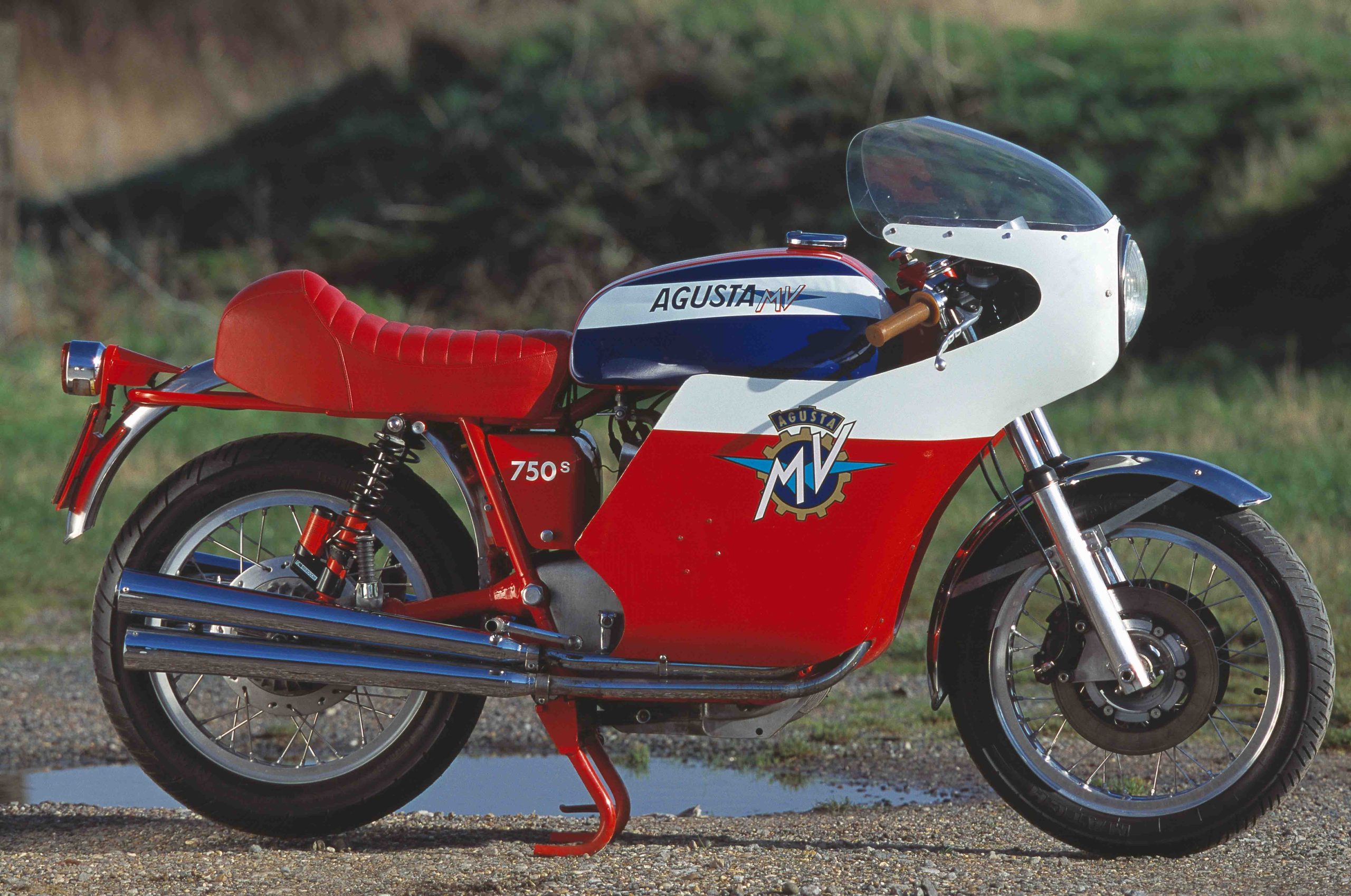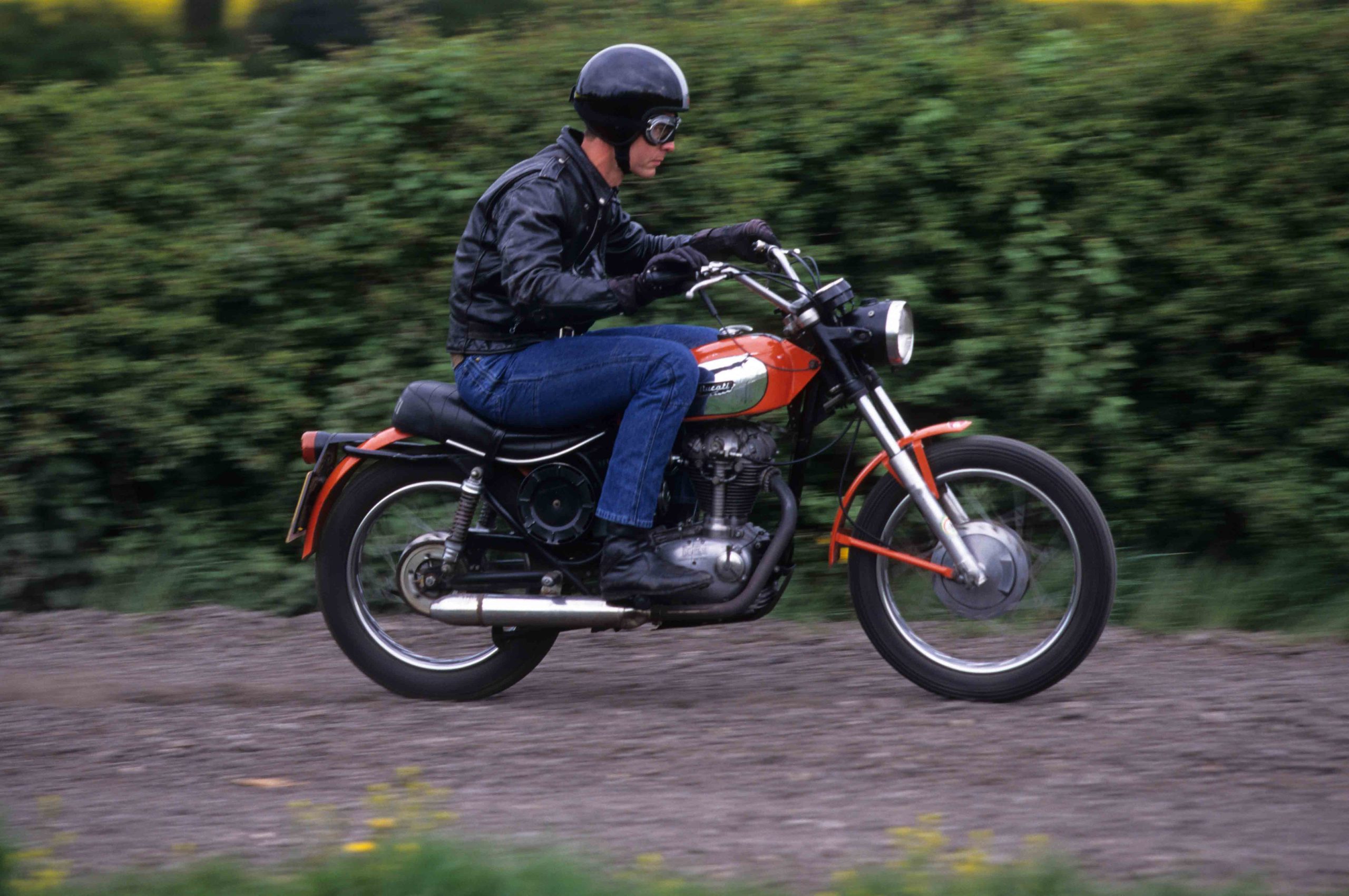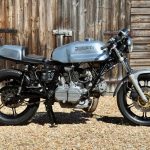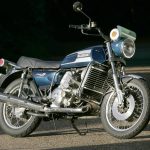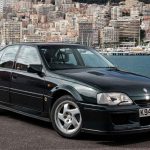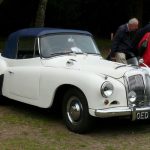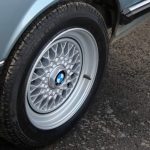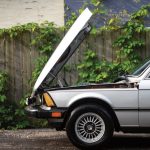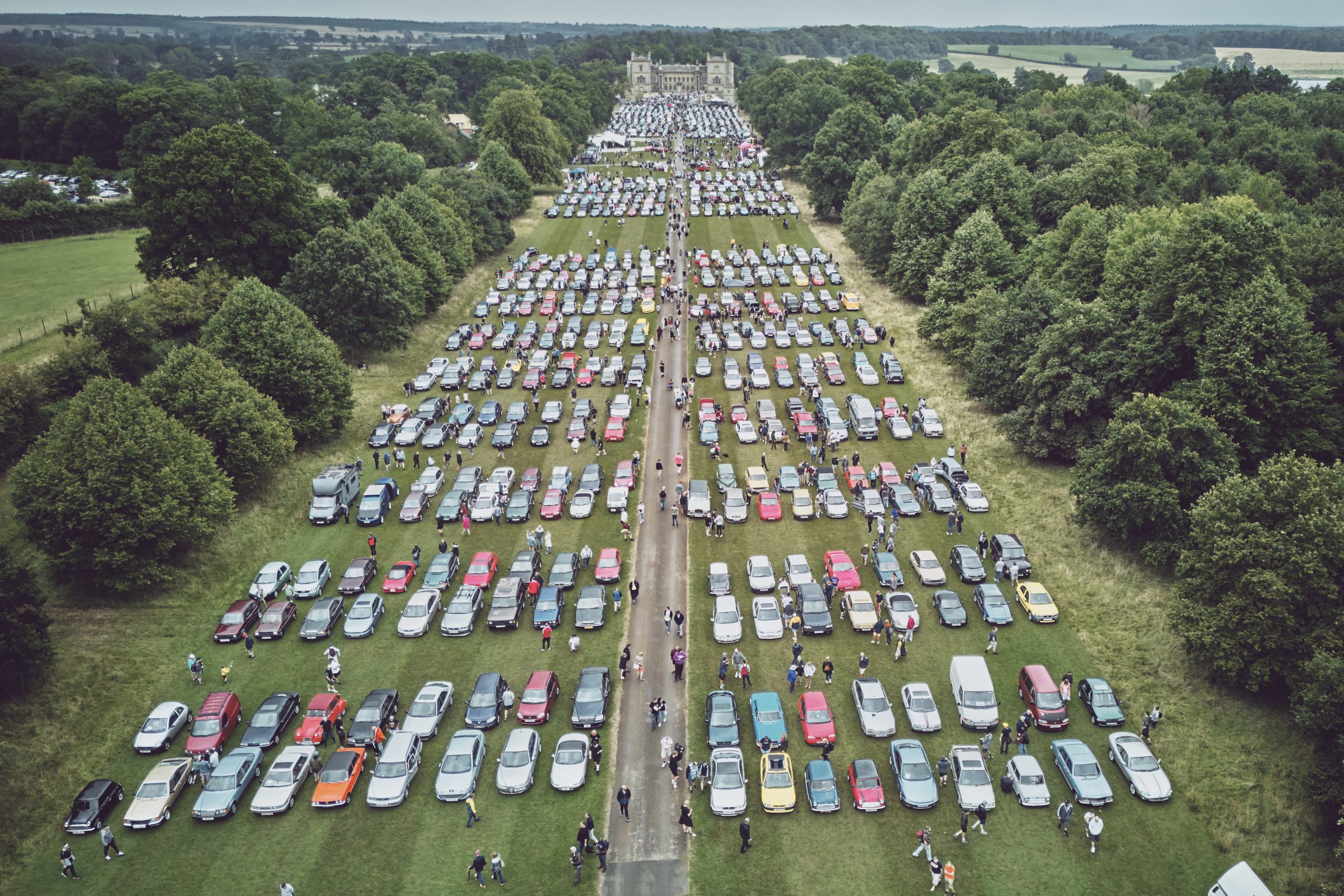Author: Roland Brown
Photography: Roland Brown
MV Agusta is in the news again. Italy’s glamorous but often troubled brand changed ownership in February amid financial problems, having recently launched an exotic superbike, the Superveloce 1000 Serie Oro, inspired by the machines ridden to Grand Prix glory by aces including John Surtees, Mike Hailwood and Giacomo Agostini.
That’s situation normal for MV, whose history of race-developed superbikes and financial turmoil dates back to the early 1970s. Back then, the MV Agusta 750 Sport was among the fastest and most charismatic machines on the road, but could not prevent the decline that saw production abandoned before the end of the decade.
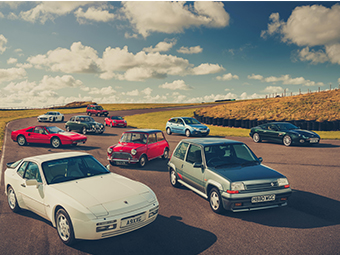
MV’s glory days had begun in 1956, when Surtees had won the 500cc world championship to trigger an unmatched era of domination by the small firm from Gallarate, north of Milan. By 1973, when this 750 Sport was built, Phil Read was about to win the factory’s 16th consecutive title in motorcycling’s premier class.
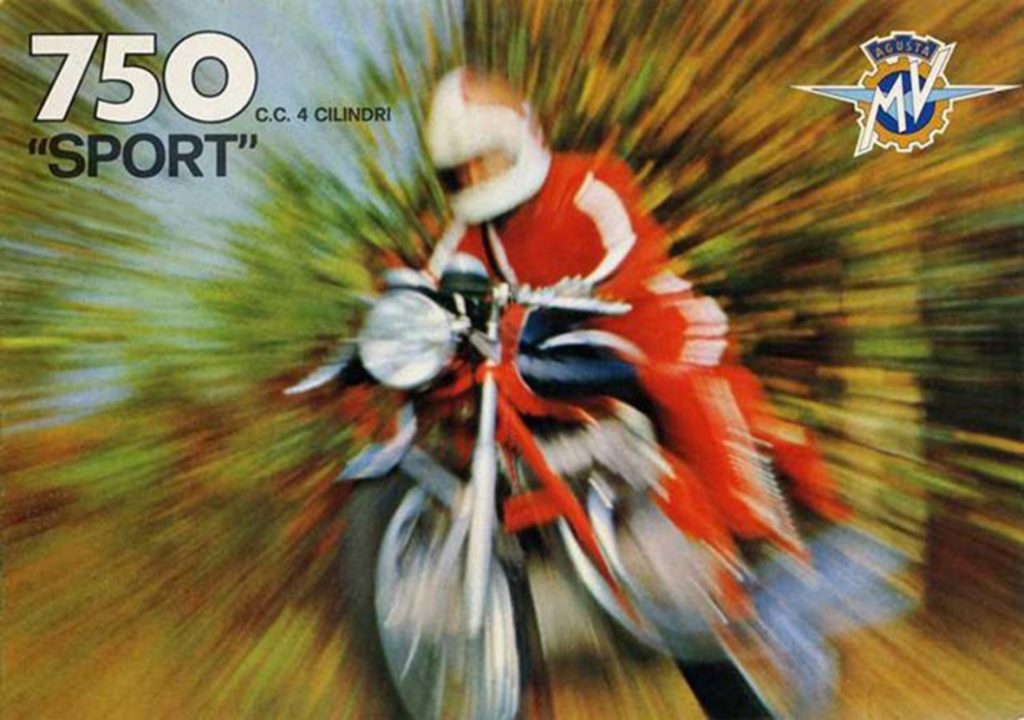
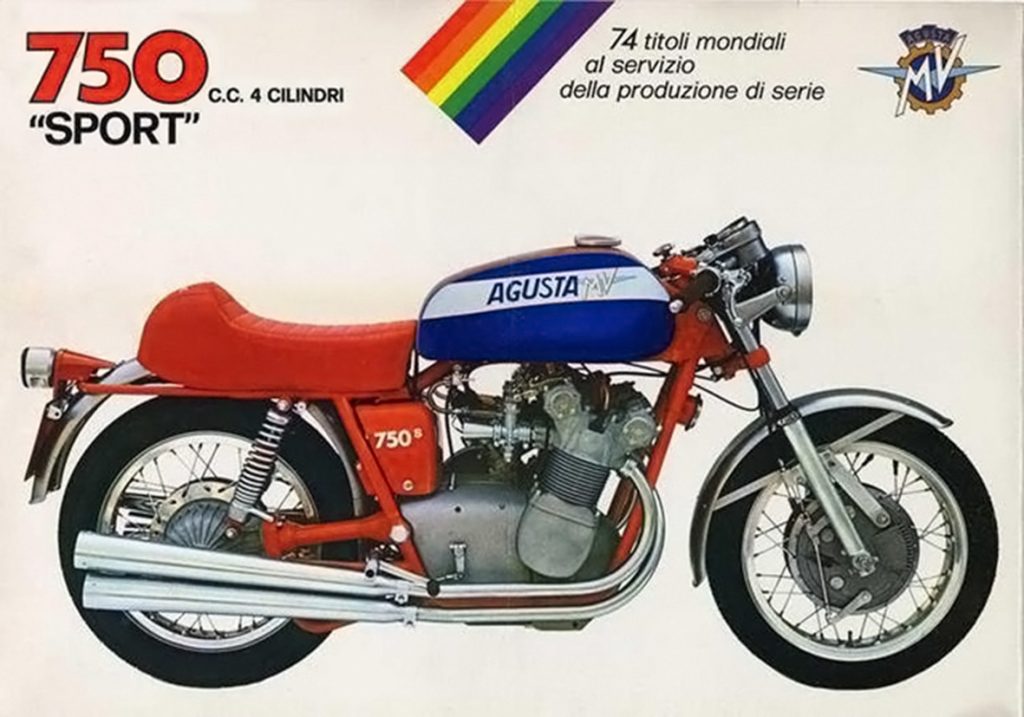
The Sport, with its powerful dohc, four-cylinder engine, high-end chassis parts and optional full fairing, was closely related to the British star’s “works” four. But although MV had ruled racing for so long, the roadgoing replica was a recent development.
During most of MV’s period of racing success the firm had not produced a multi-cylinder roadster. Instead, production had remained based on the small-capacity singles with which Count Domenico Agusta had entered the motorcycle business in 1945, when the Agusta aircraft company had been looking for a new direction at the end of World War II.
Although a handsome 500cc four called the R19 Turismo had generated plenty of interest when displayed at the Milan Show as early as 1950, it had not been put into production. And when MV had belatedly introduced a roadgoing multi, the 600 Four of 1967 had been very different in style and spirit to the glamorous racers.
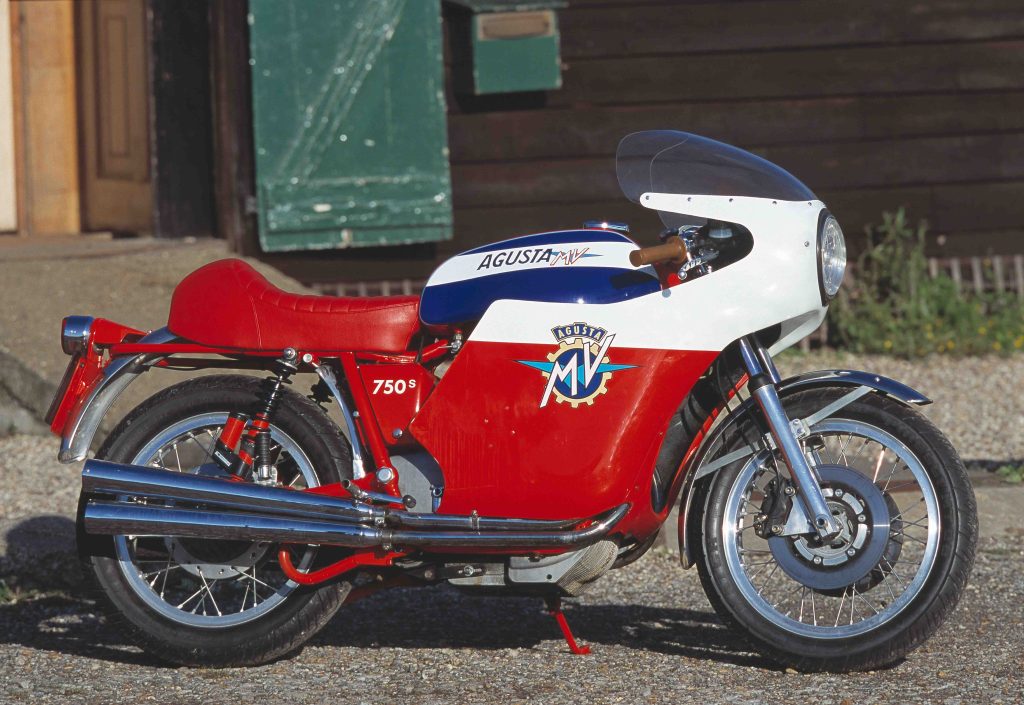
With high handlebars and a softy tuned, shaft-drive engine, the 600 Four produced just 52bhp and was barely capable of 100mph. Worse still, its large, rectangular headlight and bulbous black fuel tank made for a peculiar looking bike that had no chance of commercial success given its high price.
Count Domenico had seemingly been more keen to maintain his factory team’s racetrack dominance than to produce a sports model that might encourage privateer rivals. But the 600’s failure was so complete – just 135 would be built in five years – that he finally relented.
At the Milan Show in 1969, MV unveiled the model that many enthusiasts had long desired. The MV Agusta 750 Sport was beautiful, with a curvaceous petrol tank, paintwork in red, white and blue, clip-on handlebars, rearset footrests, a humped seat and a four-pipe exhaust system ending in slender chrome-plated megaphone pipes.
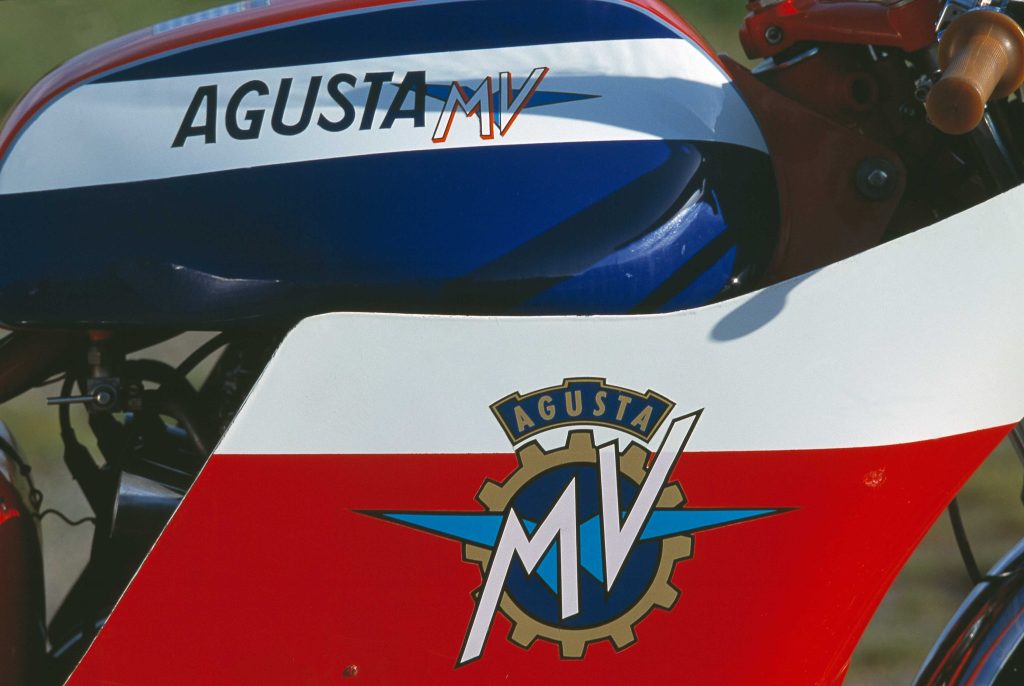
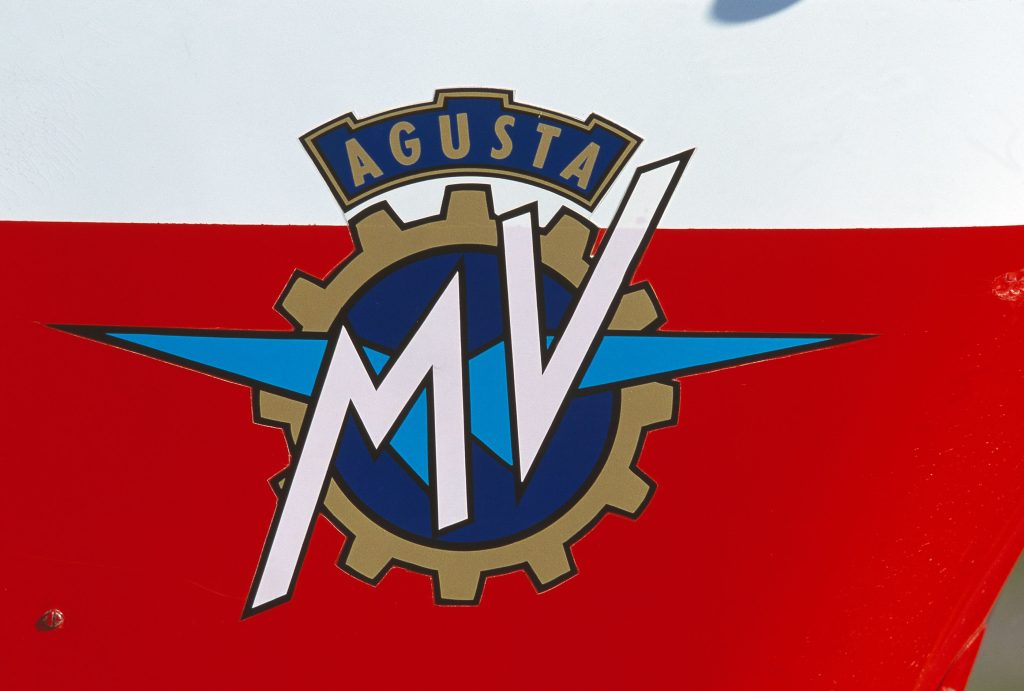
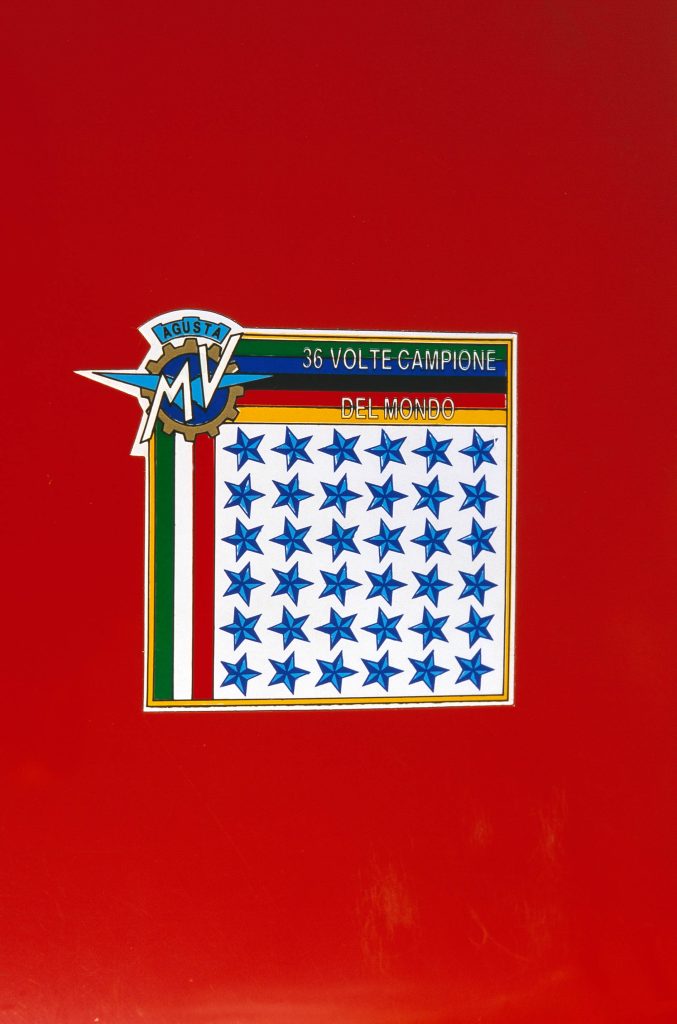
Its engine was heavily based on that of the 600, with bigger pistons that increased capacity to 743cc. A higher compression ratio, larger exhaust valves and the use of four instead of just two Dell’Orto carburettors lifted peak output to 65bhp at 7900rpm.
The roadster powerplant was very much a development of the competition unit, operating its twin overhead cams by gear train between the inner cylinders. The race engine had no generator, so the roadster featured a combined starter/dynamo beneath the engine, connected by two belts. Crankcases were sandcast, in aluminium rather than the racebikes’ magnesium.
To widespread surprise, the Sport retained the 600’s shaft final drive, rather than using a lighter chain like the racers. Its frame design also followed the roadster’s, with a single top tube, rather than using twin tubes like the racebikes. Ceriani provided the 35mm front forks and twin rear shocks; Borrani the alloy wheel rims. A big, four-leading-shoe front brake from Grimeca, another Italian specialist firm, replaced the 600’s innovative but feeble pair of cable-operated discs.
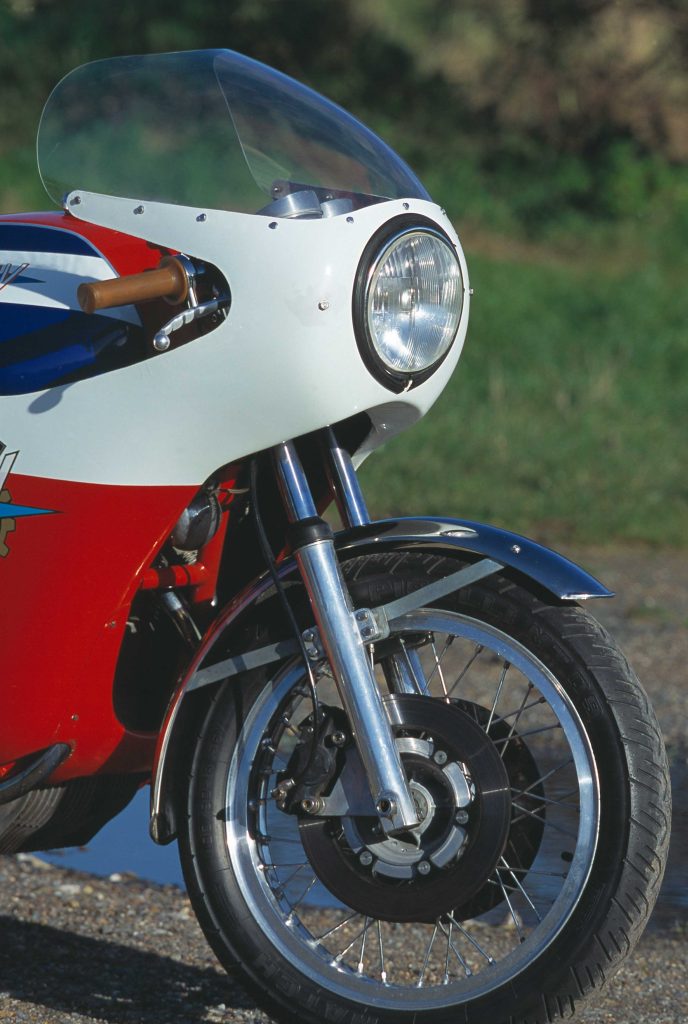
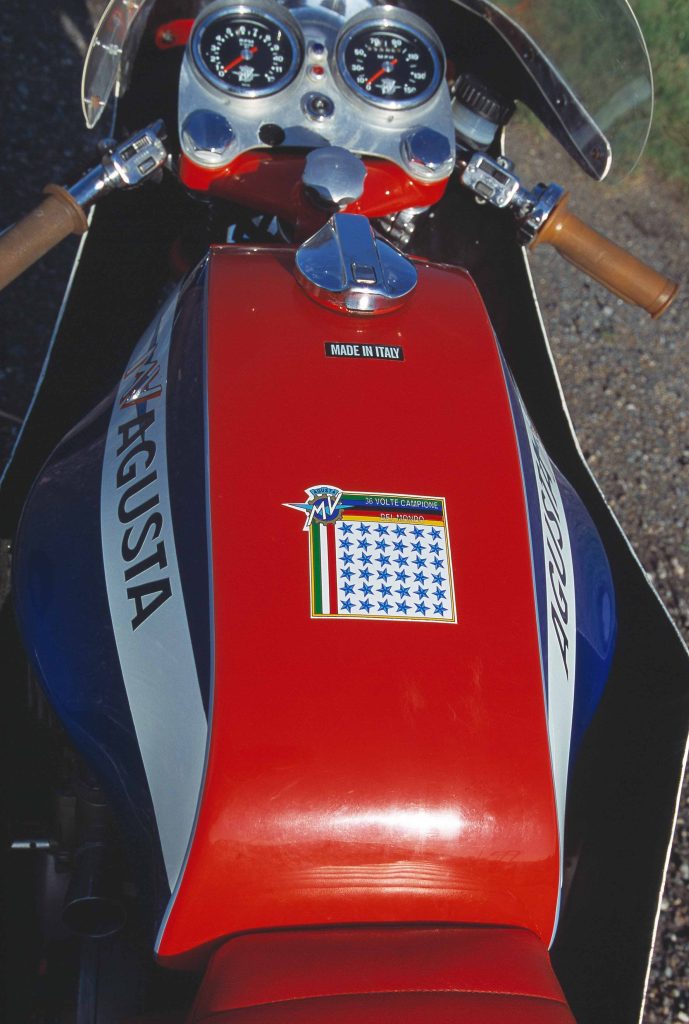
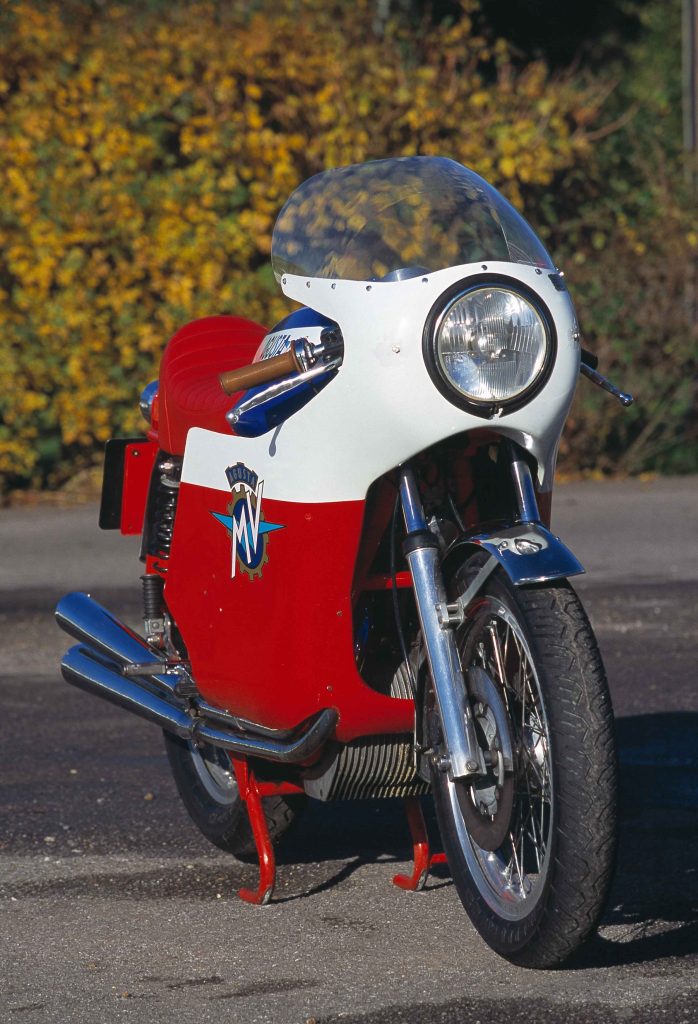
This bike is a 1973-model Sport, restored using the uprated front end that was introduced late in that year, with twin 280mm front discs instead of the original drum. At the same time the engine gained some internal updates and bigger 27mm carbs, increasing peak output to 69bhp and top speed to a genuine 120mph.
The bike also has the Brembo calipers that were supplied on later machines by the MV factory. Its full fairing was available as a factory option (as were a half-fairing and flyscreen). This Sport also has a pair of relatively modern Marzocchi remote-reservoir shocks, in place of the same firm’s simpler and much criticised originals.
Riding it is a magical experience. You climb into the rather tall saddle, and look out across the big, shapely fuel tank with its badge signifying MV’s record – and still unfinished, in 1973 – number of 36 world championship wins. Ahead is a tall screen, below which sit black-faced Smiths speedo and rev-counter (earlier Sports were fitted with Veglia clocks) plus a simple pair of warning lights.
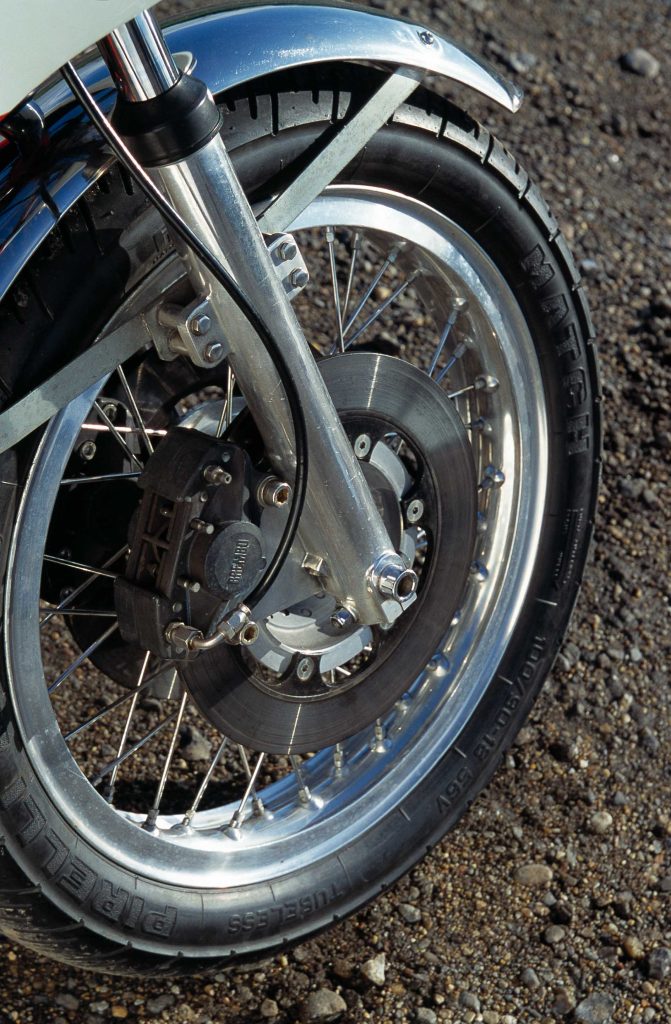

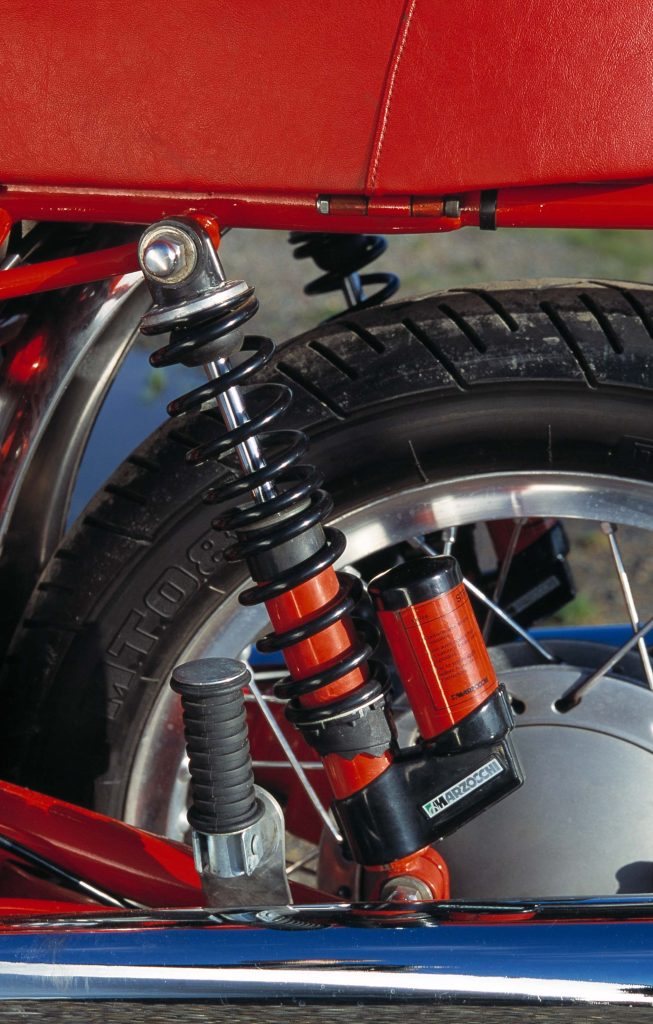
Reach down to tickle some fuel into the Dell’Orto carbs at either side, then press the button in the cheap-looking switch box on the right clip-on handlebar. The starter unit puts its belt into motion, and the engine fires. Between the barks of the free-breathing pipes you hear the rustling, grumbling mechanical sounds from inside the motor, which like the racing units has needle-roller and ball bearings throughout, instead of the more modern plain bearings.
The robust four-cylinder unit’s relative weakness is its clutch, and this bike’s felt rather grabby as I hooked first gear with my right boot and pulled away. But once into its stride the MV behaved flawlessly, surprising me by being docile and easy to ride at slow speed, idling happily, and accelerating crisply when the ridged throttle was wound back, even with less than 2000rpm on the rev-counter.
You can ride an MV Agusta four gently, but if there’s one bike in all the world that is wasted by doing so, it’s this one. The Sport didn’t match its manufacturer’s claim of 129mph (225km/h) top speed; US magazine Cycle World managed only 114mph. But very few bikes could approach its performance, and it was uniquely special to ride.
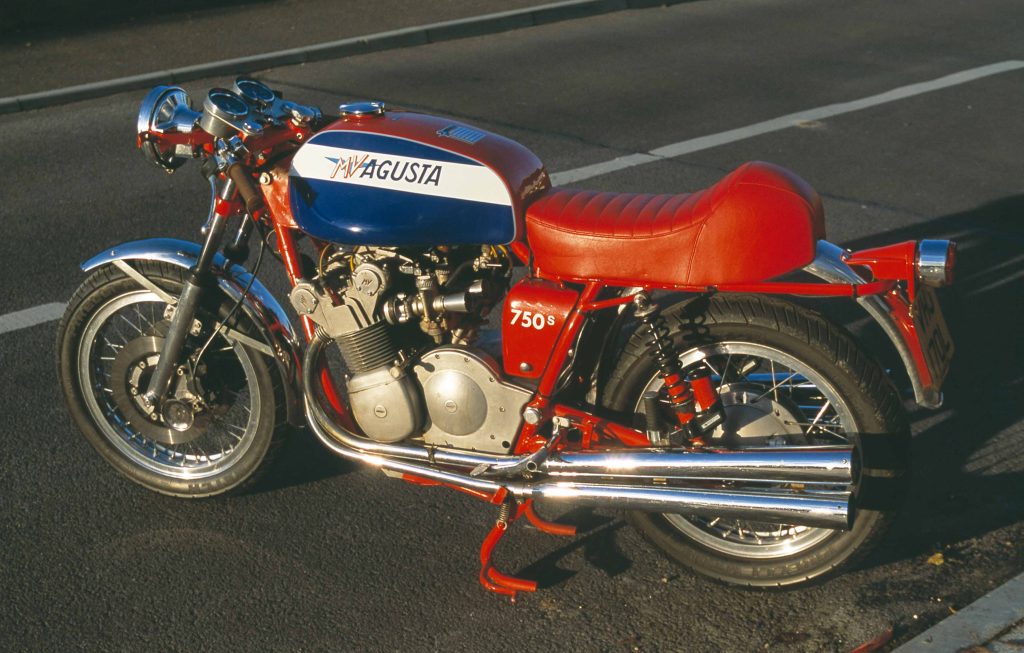
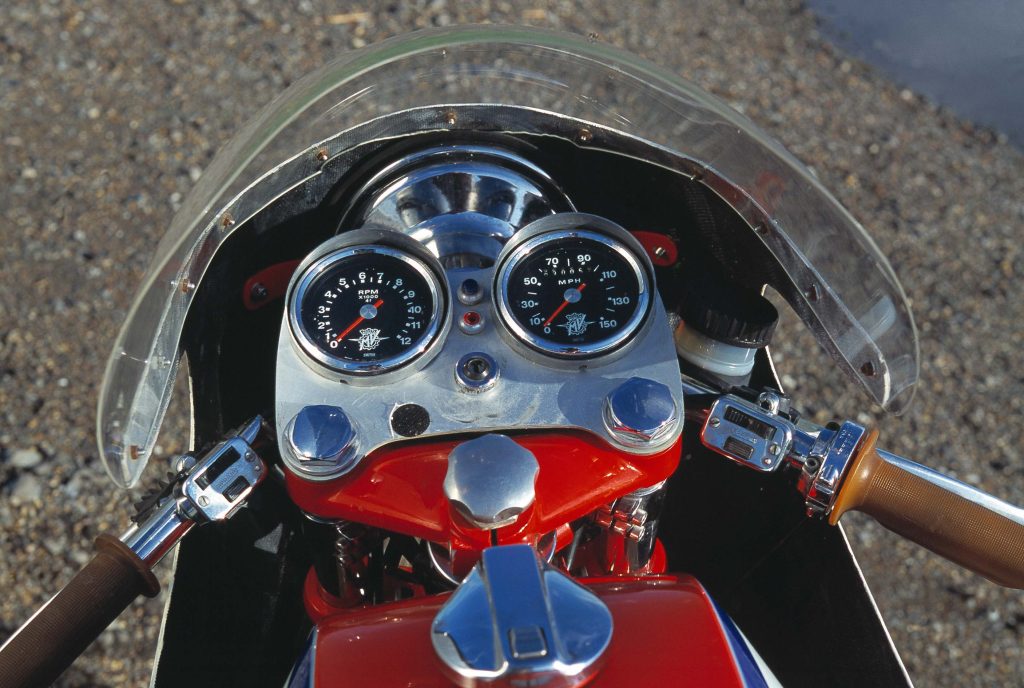
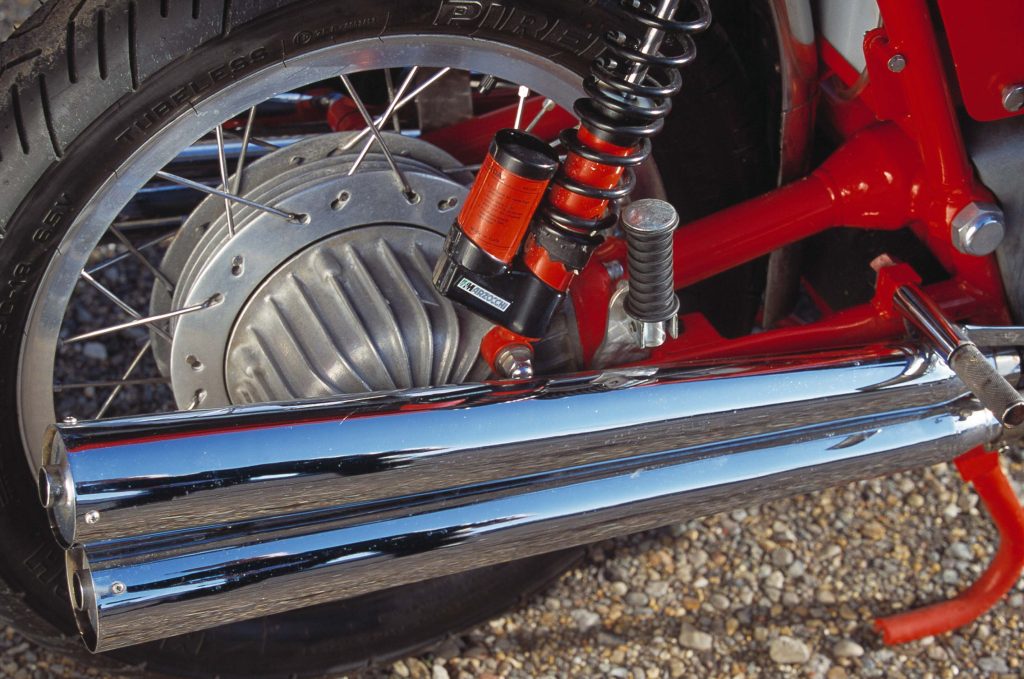
For one thing the Sport was superbly smooth, and encouraged hard riding with a slick gearbox that was a delight to use despite its unfamiliar right-boot, down-for-up change. Most memorable was the blend of induction and exhaust roar as the tacho needle flicked past 5000rpm and the engine kicked again, bellowing out a uniquely aggressive sound that transformed the most ordinary road into a Monza circuit straight.
Thrilling engine performance I’d expected; what surprised me was that the handling was pretty damn good too. The Sport’s frame wasn’t as rigid as the racers’, and the shaft drive assembly added 15kg or so of unwanted weight, contributing to a substantial total of 230kg. But the shaft introduced very little torque reaction, and the shocks kept the rear end under control.
High-speed stability was excellent, with the fairing doubtless playing its part by preventing unwanted forces from being transmitted through the clip-ons. Although the Sport felt tall and ungainly at slower speeds (and also when manoeuvring it at a standstill, when the fairing threatened to skin my thumbs on the tank), its steering was precise and reasonably light.
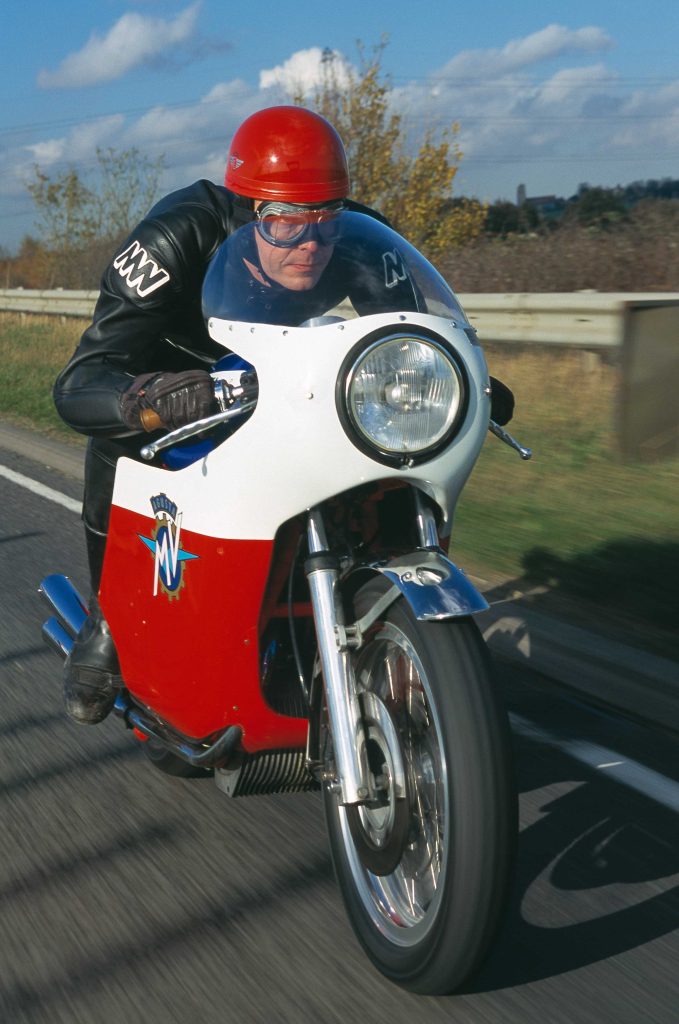
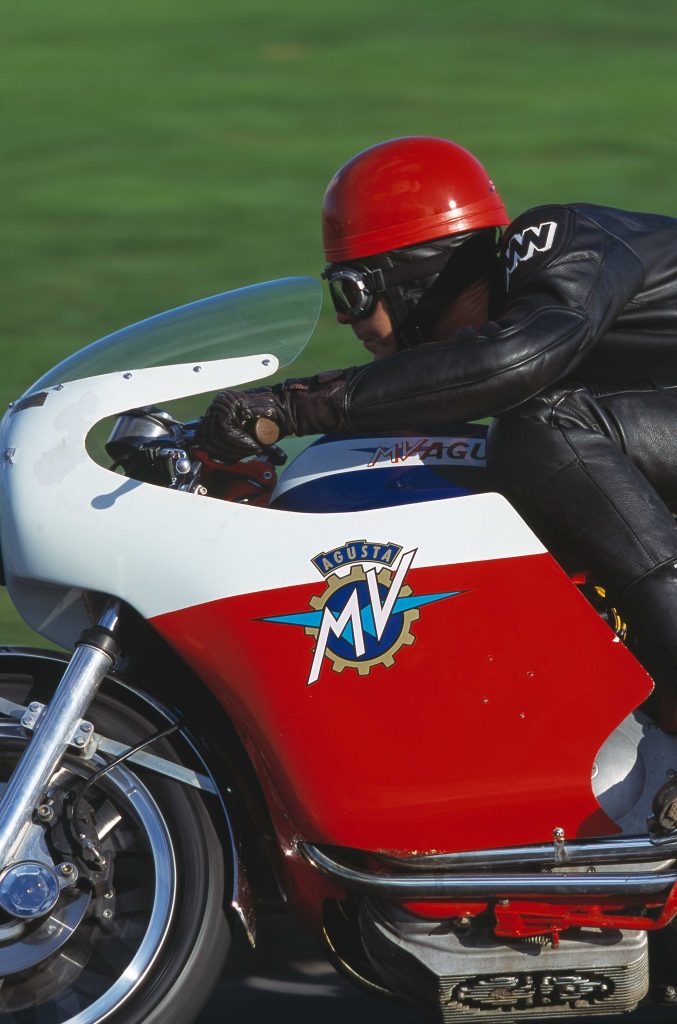
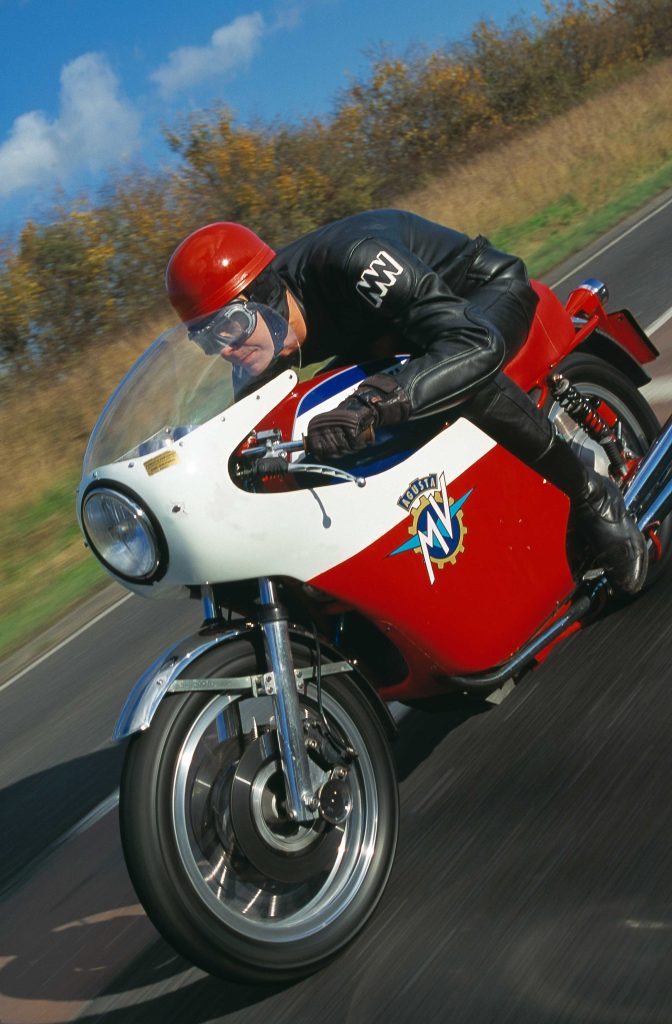
Towards the end of the ride I was sitting at some traffic lights, blipping the throttle and enjoying the cacophony of whirring gears and barking exhaust from this most deliciously noisy of bikes. The bike had no mirrors so I didn’t realise there was another rider right behind me – until, as I accelerated away from the lights, he came past with throttle open and chin on the tank, clearly aiming to put this old machine in its place.
With MV Agusta honour at stake, I wound back the Sport’s throttle and tucked down behind the tall screen. The feeling of raw, race-bred aggression was spine-tingling as the big four-cylinder engine reached 5500rpm and kicked hard with a deafening bellow from its quartet of pipes.
Moments later I was travelling at… well, let’s just say quite fast, and treading down into top gear as the Sport closed the gap slightly. As we approached a sweeping right-hander I was right with him, in my imagination Hailwood on the TT circuit or Read at Spa-Francorchamps. The MV remained rock solid as I brushed its front brake lever, then dialled in the throttle again to keep the bike driving through.
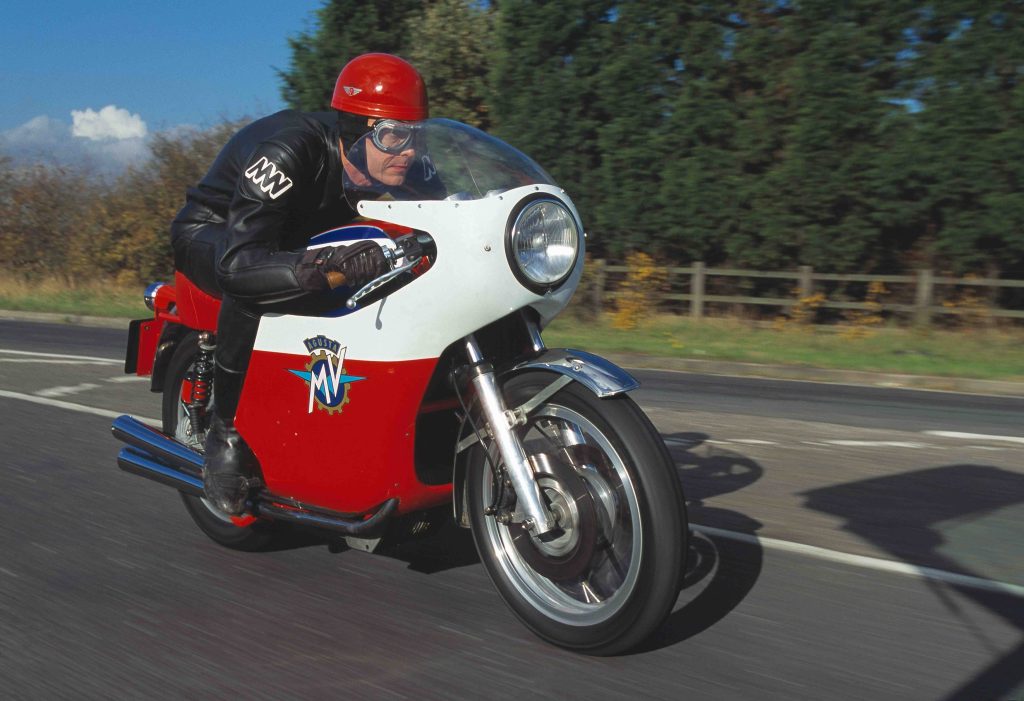
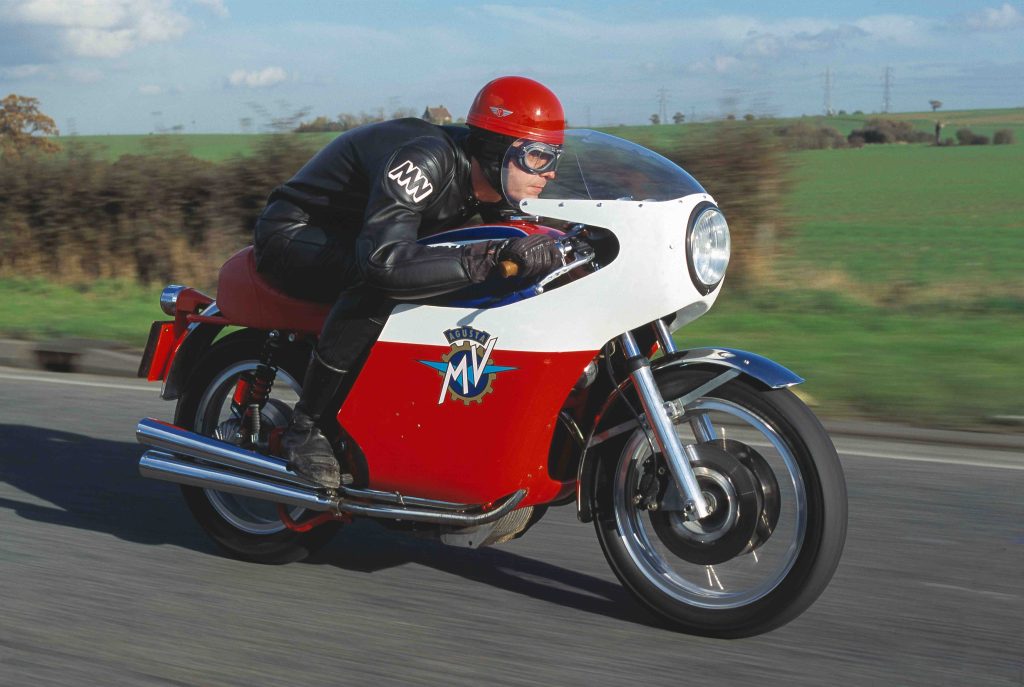
Another short, loud burst of acceleration followed, and the gap was unchanged as we braked for the following roundabout, the twin front discs biting to slow the MV hard despite its narrow front tyre. Then, as quickly as it had begun, the duel was over. The other rider turned off at the first exit while I carried on round, keen to return the bike on time and in one piece.
It’s as well to be slightly cautious when riding a MV Agusta 750 Sport, not least because this most exotic of motorcycles has always been among the most valuable. A 1973-model Sport reportedly sold at auction for £96,700 in 2018, so you’d need a six-figure sum for an example as clean and original as this one.
Back in 1973, when Honda’s CB750 four cost £850 and Kawasaki’s new 903cc Z1 was £1088, the Sport’s price of £2300 made it the most expensive bike on the market. Unfortunately for MV, the four-cylinder model’s intricate engine design, high construction cost and low-volume production meant it still couldn’t be made profitably.
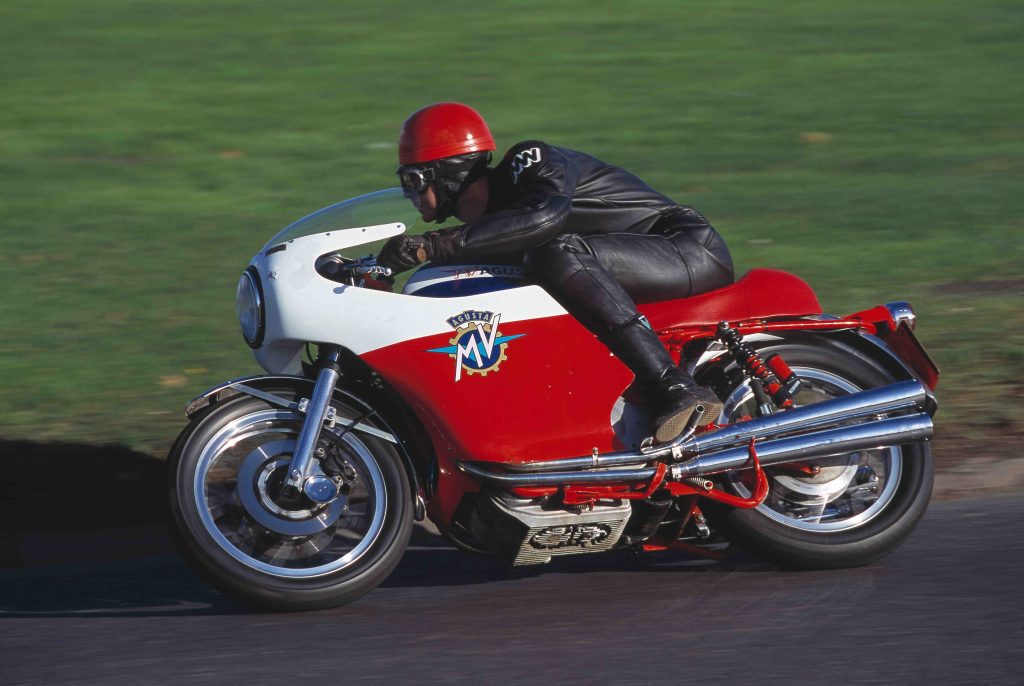
Despite that, MV continued to develop the four, in 1975 releasing the 750S America, built for the US market with new, angular styling and a 789cc, 75bhp engine that pushed top speed towards 130mph. Two years later this was followed by the 850 Monza, with a more powerful 837cc engine. But by the end of 1978 the Agusta family had lost control of the MV motorcycle business, and production had ended.
It would be another two decades before MV Agusta’s rebirth in 1998 under new ownership, with the 750 F4 sportster. Since then the firm has made headlines with spectacular models and financial struggles alike. Perhaps it will always be this way for this most glamorous but vulnerable of manufacturers.
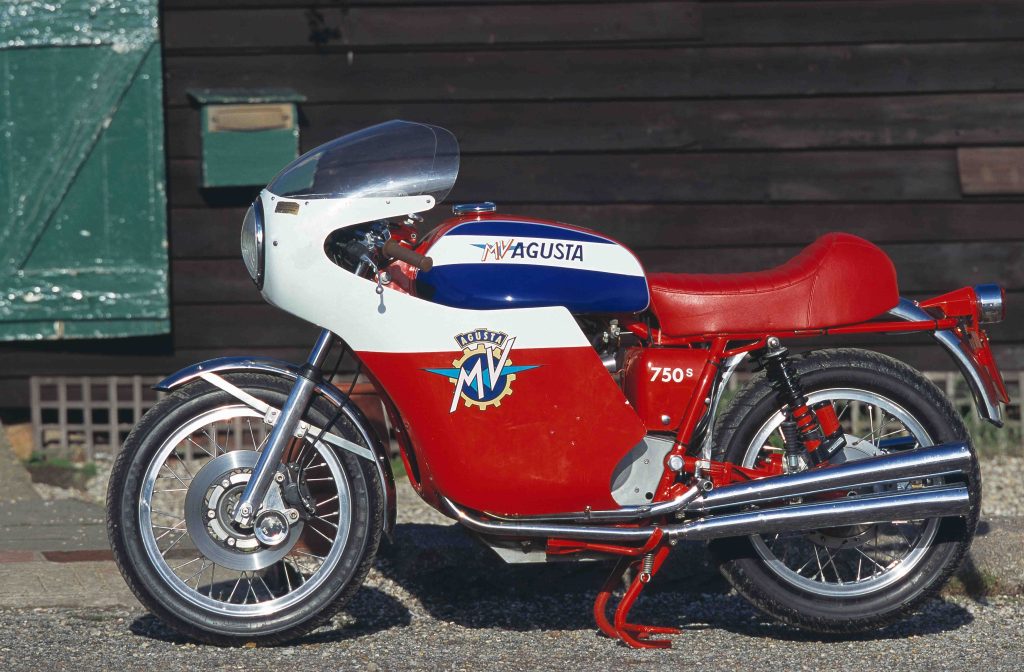

Meanwhile the MV Agusta 750 Sport remains as a vivid reminder of the Italian marque’s glory days, which ended when Read won his second and MV’s 18th 500cc title in 1974. This is a classic superbike that has it all: looks, rarity, racing heritage, and a fiery performance and unique character that make it hugely thrilling to ride.
What are your thoughts about MV Agusta’s 750 Sport or the brand’s racing legacy? We’d love to hear from you in the comments below!
Discover more classic superbike content:
Fireblade: How Honda Bottled Lightning
Few bikes can approach the howl of the MV Agusta Magni
MV Agusta and Alpine create A110-inspired superbike
